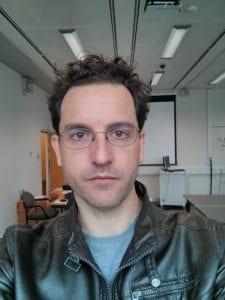 New methods to enable robots to understand the world around them have been put forward by Dr Oscar Martinez Mozos from the School of Computer Science.
New methods to enable robots to understand the world around them have been put forward by Dr Oscar Martinez Mozos from the School of Computer Science.
His paper, currently in press, details research into how a robot can understand human-made environments by trying to learn how to recognise different types of surroundings, such as corridors, kitchens and offices. A 3D laser sensor is used in order to scan the environment.
Dr Martinez-Mozos said: “In our method, we combine the range and reflectance data from the laser scan for the final categorisation of places. The results of the presented experiments demonstrate the capability of our technique to categorise indoor places with high accuracy.”
The paper ‘Categorization of indoor places by combining local binary pattern histograms of range and reflectance data from laser range finders’ is currently in press for the international journal Advanced Robotics. The research was conducted with the University of Kyushu in Japan.
In a second publication Dr Martinez Mozos and colleagues study new methods for robots to be able to recognise everyday objects such as plates, boxes and cups.
He said: “The main point of this paper is that we focus on the situations where there is a lot of clutter and it is difficult to distinguish the different objects. For example, we try to identify several objects that are located on a table and that occlude each other. In this situation the task of recognising objects is difficult (even for humans) because the robot can only see a part of the object.”
The paper presents an approach based on a 3D dataset containing over 15,000 Kinect scans of more than 100 objects which were grouped into general geometric categories.
The joint work ‘Cumulative object categorization in clutter’ was done in collaboration with the German Aerospace Center (DLR), the University of Bremen in Germany, and the Autonomous Technologies Group Robert Bosch LLC in the United States.
The paper was accepted for a workshop organised inside the Robotics: Science and Systems (RSS) conference, June 2013.